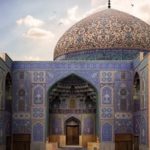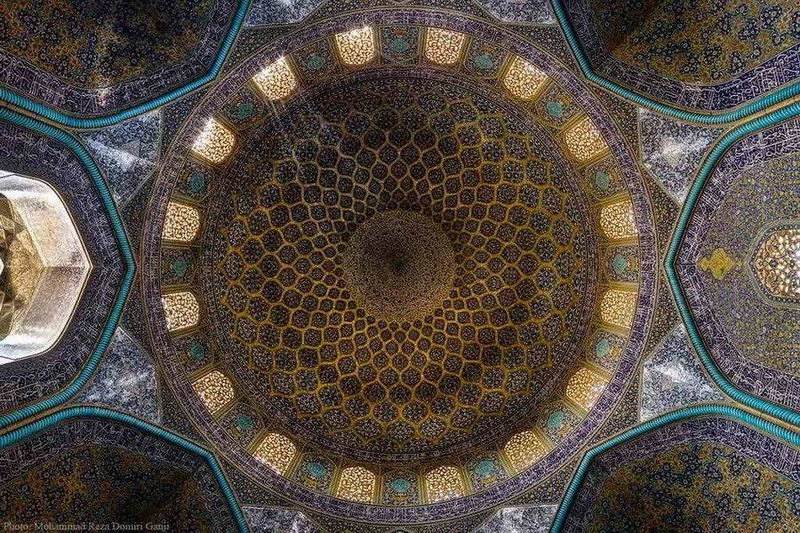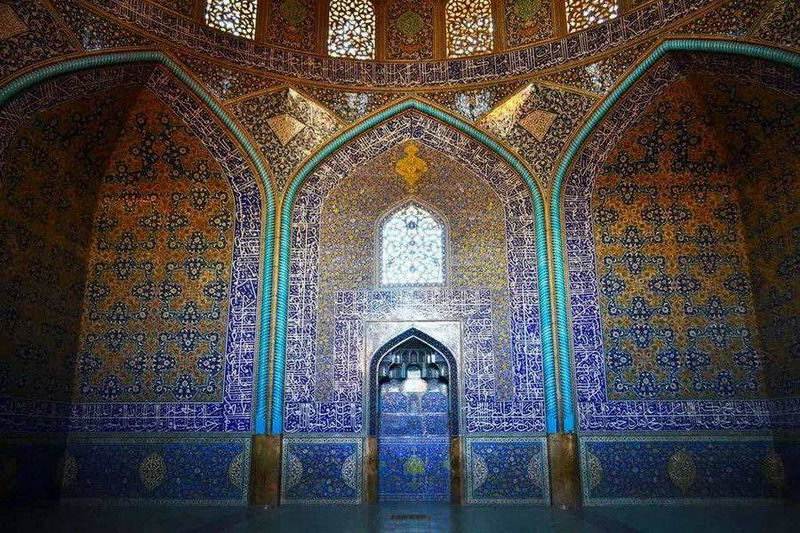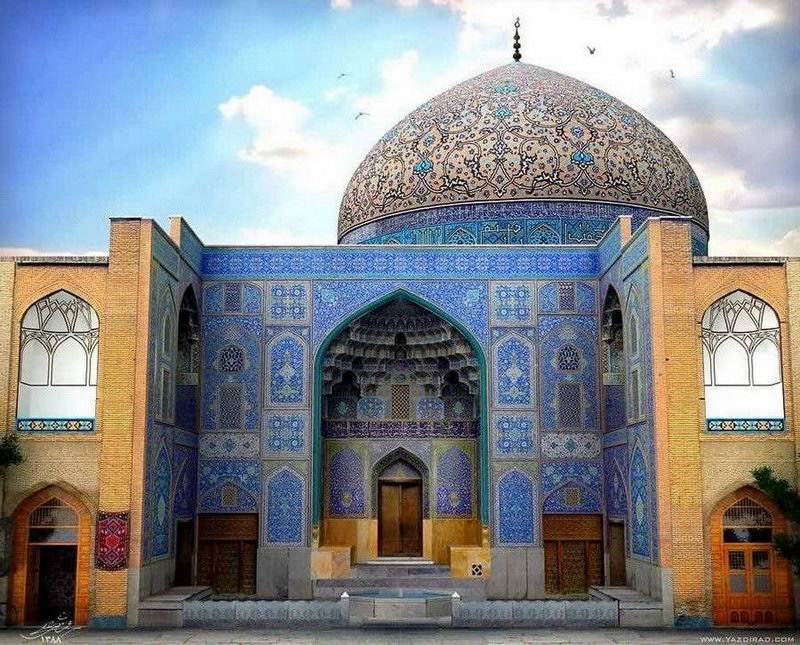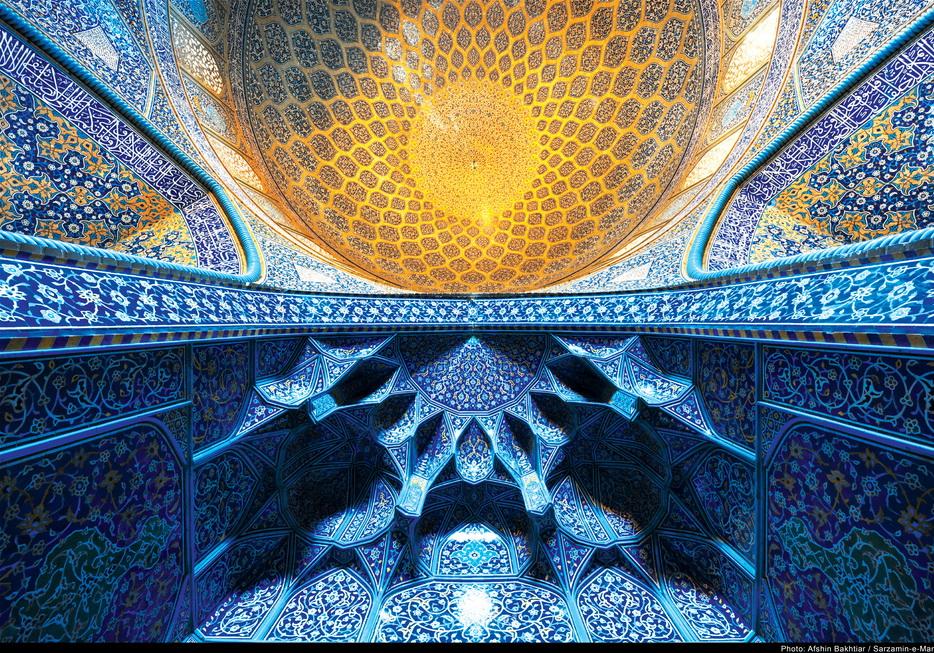Sheykh Lotfollah Mosque
Sheykh Lotfollah Mosque is located on the eastern side of Naghs-e Jahan Square, opposite Ali Qapu Palace. The construction of this mosque began in 1602 on the ruins of an older mosque and was completed in 1619. It was designed and built by Mohamad Reza Esfahani, renowned architect of the Safavid period, and the calligraphy that decorate it were carried out by Ali Reza Abbasi, famous calligrapher of the time.
Sheykh Lotfollah, the main imam of this mosque, who was named after him, was one of the greatest Shiite theologians and father-in-law of Shah Abbas.
This mosque, with a not very high dome, lacks - unlike most mosques in the Islamic world - minarets and sahn(typical courtyard of mosque architecture) and with a rotation of 45 degrees from the north-south axis with respect to the axis in the direction of Mecca (towards which the prayer is addressed), from the urban point of view it harmonizes well with the buildings surrounding.
The vestibule of the mosque is located in a recess in the eastern corner of the square. The vestibule is connected by four steps to the main entrance door, which was completed in the 1603. Entry inscription composed in writing Suns by means of white majolica tiles on a light blue background shows the signature of Ali Reza Abbasi and the date of 1603.
The lower part of the façade walls and the large side pedestals are clad in yellow marble. The entrance door is made up of two solid wood planking doors still well preserved after 400 years. Opposite the mosque there was also an octagonal basin which was eliminated between the 1937 and the 1939.
The access corridor to the mosque with a left and a right turn corrects the misalignment of the eastern façade compared to the direction of Mecca. Even the reduced height of the circular dome means that this angular misalignment, even when looking at the mosque from the outside, is not too conspicuous.
This dome is decorated with drawings and figures of a light blue on a cream background. The curvature of the dome from a point of great projection suddenly tends towards the inside and gives shape to the apex of the dome. The thickness of the walls is about 180 cm that support the thrust of the dome well.
The internal decoration of the walls has an octagonal shape and is bordered by turquoise tiles. All around the walls are the calligraphic works by Ali Reza Abbasi, for example in some frames made of white tiles in the middle of dark celestial tiles. In mehrab (niche that in the places of prayer indicates the direction of Mecca) was used a very refined tile decoration to form mosaics and moqarnas. On two plates inside the niche of the mehrab the name of the architect of the mosque is written. Around mehrab there are some inscriptions by Ali Reza Abbasi and Baqer Banna. The mehrab with its crisp and clear colors, with its compositions and harmonious calligraphic works, it is made of a jagged vault, above which there is a decoration made of refined arabesques. The majolica decoration of this jagged arch has an interior made of moqarnas similar to mother of pearl and a background with beautiful plant representations.

